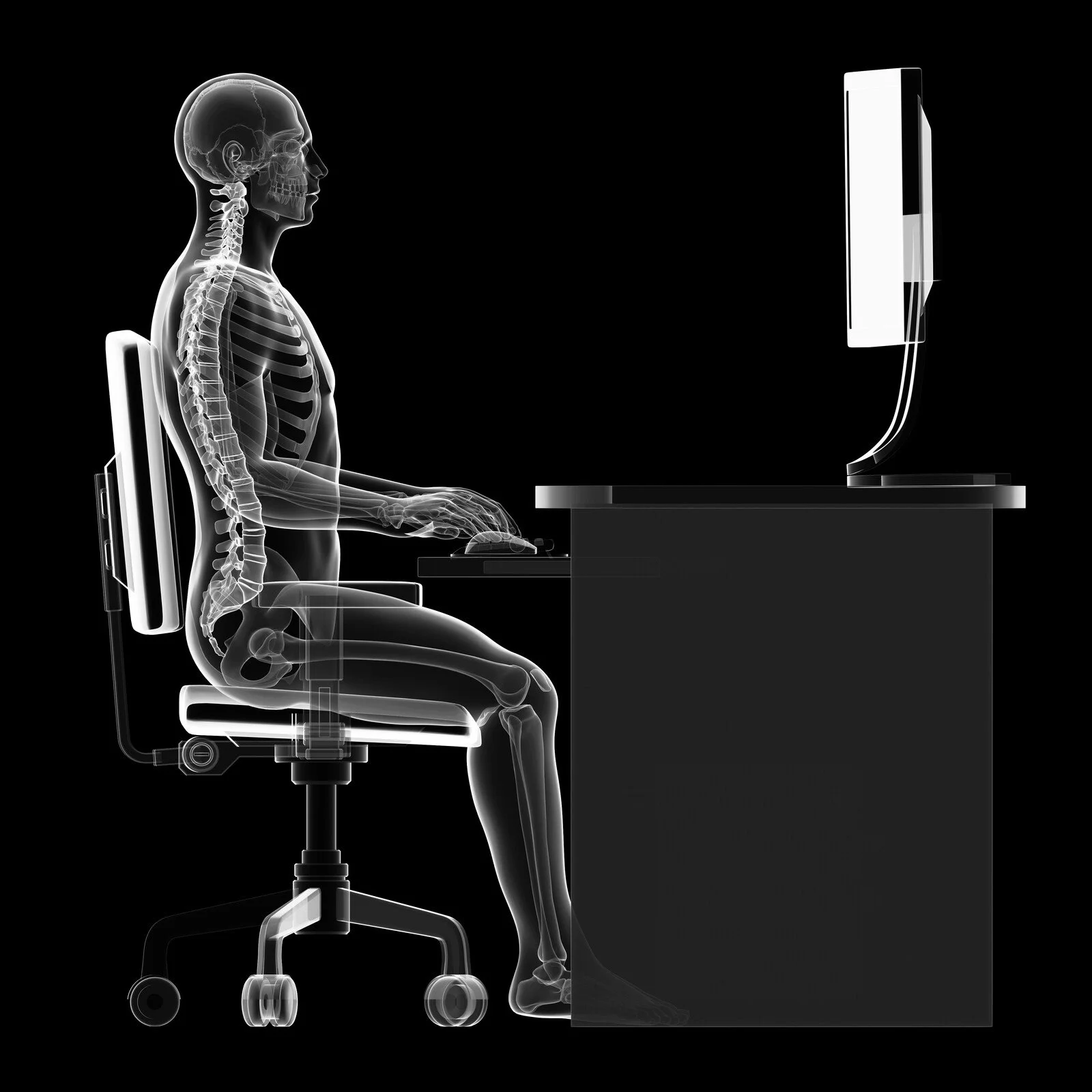5 Point Guide to Avoid Back Problems
/5 Point Work Station Guide to Avoid Back Problems
A badly designed workstation can be a pain in the neck, quite literally. If you spend more than an hour a day using display screen equipment, then you may benefit from a quick recap on how to ensure your workstation is set up in the best way.
Follow this 5-point guide for good posture and back health:
1. A comfortable chair that supports the spine
You don’t have to invest in an expensive ergonomic office chair but on the other hand that is not a bad idea either! Whatever seat you are using, make sure you push your hips back into the chair and have your back fully supported. Use a cushion for additional back support or invest in some inexpensive, external lumbar support which has the added benefit of being transferable to other types of seats. Follow this link for more information on external cushions.
2. Leg and foot position
There should be space between the back of your knees and the edge of the chair. Using a footrest can be a comfortable way to help your thighs remain almost parallel to the floor. Your feet should be flat on the floor and your knees equal to your hips. Legs 90 degrees and arms 110 degrees.
3. Forearm and wrist position
Have your forearm, wrist and hands form a level line from your keyboard to your elbow. Try moving your mouse through different movements involving your elbow and shoulder - your wrist should not be involved. Keep wrists straight and relax the shoulders in order to avoid strain or injury. If using a laptop for longer periods, you’ll benefit from adding a separate keyboard and mouse.
4. Position your screen
Reduce eyestrain by positioning your screen at arm's length away from your face. Aim to have your eyes roughly level with the top of your screen so if you are using a laptop, elevate the screen on a laptop riser or even some books so the screen is at eye level. Having the screen at the wrong height will result in discomfort and pain in your neck.
5. Get up and do regular stretching
The HSE advises that you stand up and move away from your screen for 5 to 10 minutes every hour. Regularly stretch but avoid discomfort and pain. This reduces musculoskeletal disorders, including upper limb disorders and repetitive strain injuries. Keep blood flowing to the organs especially that brain!
Having comfortable seating and the right equipment will ensure healthy, sustainable posture while working on display screen equipment. Something as simple as supporting the spine may even impact on your productivity and wellbeing.
Now, let’s get back to work!
At AirCare Systems we work with designers and manufacturers all over the world to produce some of the best dynamic office chairs available.






